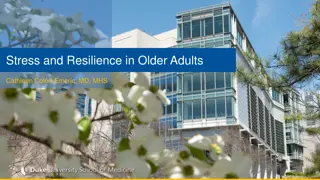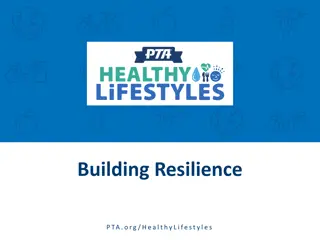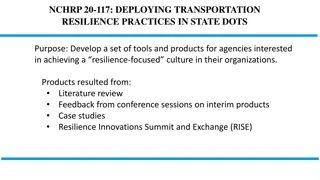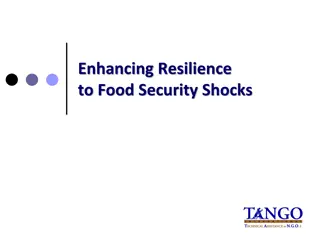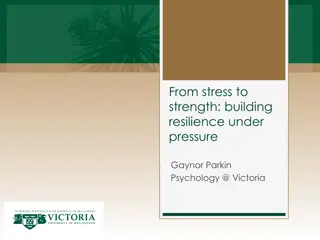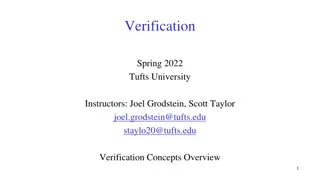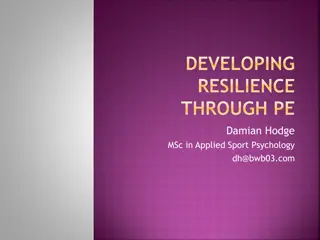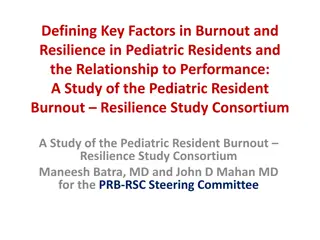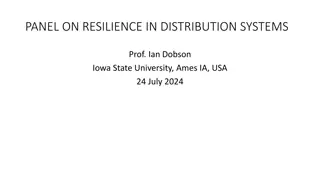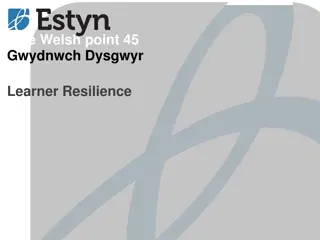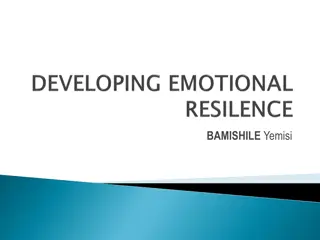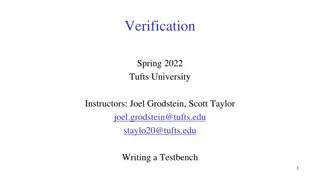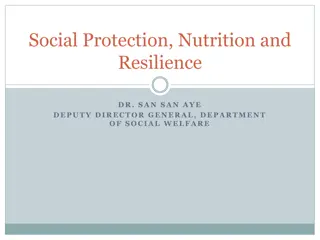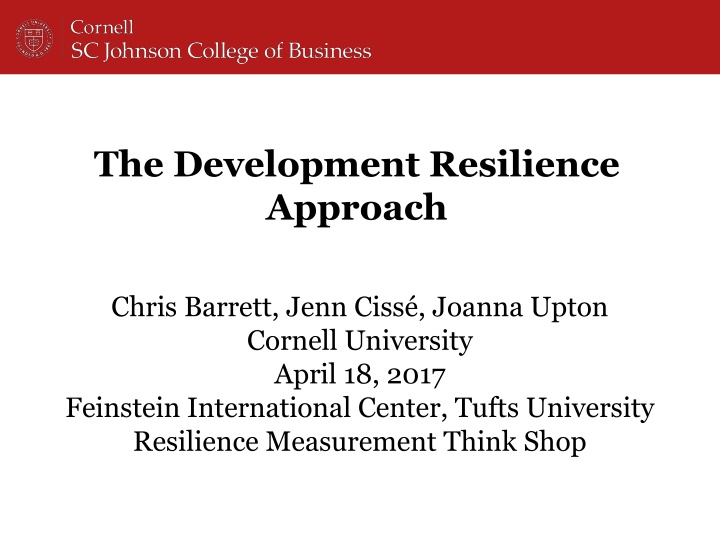
Development Resilience Approach for Well-being Dynamics and Food Security Insights
Explore the Development Resilience Approach based on Barrett & Constas' work, focusing on estimating stochastic well-being dynamics and resilience in different contexts like northern Kenya and Tigray. The approach involves measuring well-being outcomes, evaluating resilience through conditional moments, and examining food security indicators to understand thresholds and asset coefficients.
Download Presentation

Please find below an Image/Link to download the presentation.
The content on the website is provided AS IS for your information and personal use only. It may not be sold, licensed, or shared on other websites without obtaining consent from the author. If you encounter any issues during the download, it is possible that the publisher has removed the file from their server.
You are allowed to download the files provided on this website for personal or commercial use, subject to the condition that they are used lawfully. All files are the property of their respective owners.
The content on the website is provided AS IS for your information and personal use only. It may not be sold, licensed, or shared on other websites without obtaining consent from the author.
E N D
Presentation Transcript
The Development Resilience Approach Chris Barrett, Jenn Ciss , Joanna Upton Cornell University April 18, 2017 Feinstein International Center, Tufts University Resilience Measurement Think Shop
Development Resilience Approach Based on Barrett & Constas (PNAS 2014) Probabilistic approach to estimating stochastic well-being dynamics Like poverty estimation, an explicitly normative approach based on assumed (i) Level Minimum acceptable standard of adequate well-being (outcome) for an individual or household. (ii) Probability Minimum acceptable likelihood of meeting level
Estimating Resilience - In order to evaluate, must first be able to measure (if observable) or estimate (if unobservable). - Estimate conditional moments of the well-being outcome variable, as a function of variables reflecting (i) exogenous shocks (e.g., drought, illness, cyclone) (ii) conditioners of exposure, recovery (e.g., gender) (iii) interventions (iv) polynomial lags of DV (i.e., nonlinear dynamics) - Describe and predict time path of resilience for individuals of aggregates of individuals
Examples from northern Kenya pastoralists By gender of HH head By HH mobility
Extension: Food security & resilience in Tigray (Maxwell, Vaitla, Ciss , and Upton) Building on Livelihood Change over Time study (Feinstein & Makelle University) Four rounds of data over two years (~300 hhs), Tsaeda Amba & Seharti Samre woredas Explore relationship between food security indicators (FCS & RCSI), and examine thresholds Confirm that indicators capture different dimensions (combining regions is deceptive) Changing thresholds has some effect on interpretation
Extension: Food security & resilience in Tigray (Maxwell, Vaitla, Ciss , and Upton) FCS Resilience: Asset Coefficients by Zone & Threshold 0.08 0.07 0.06 0.05 0.04 0.03 0.02 0.01 0 16 18 20 22 24 26 28 30 32 34 36 38 40 42 44 -0.01 -0.02 TLU EP Land EP Water EP TLU MT Land MT Water MT



